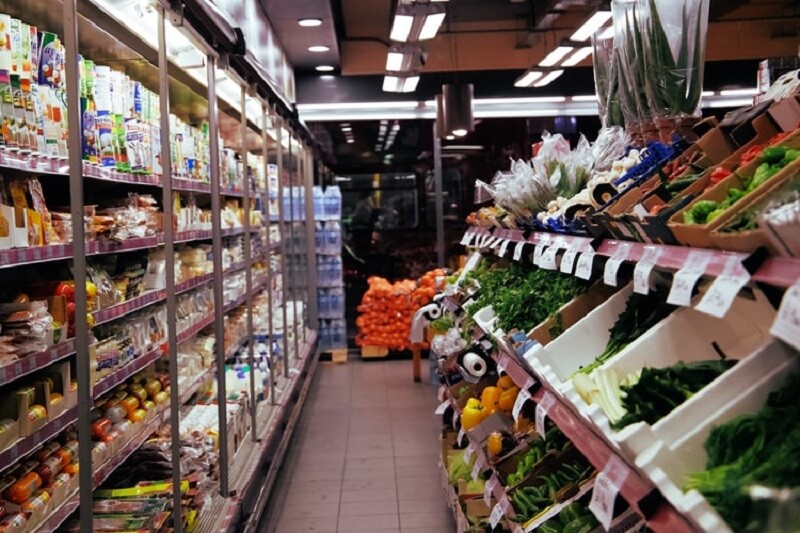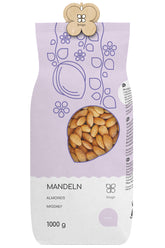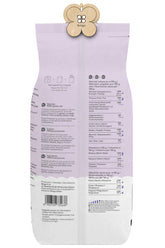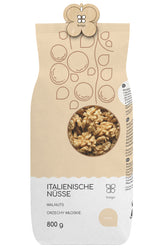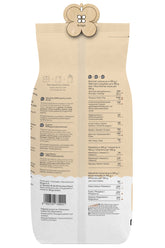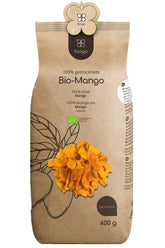How do stores sell you more than you want to buy?
CONTENTS
- The distribution of goods in the store
- Check out products
- "Magic" price ends
- Actions, actions!
- Loyalty cards and vouchers
- Place products on sales shelves
- Advertising promotes trade
- Limited offers
- Summary
A day like any other. We prepare our shopping list, calculate the amount we need to spend, and when we leave the store, we realize we've bought much more than we planned. Sound familiar? In today's world, marketing tricks are at such an advanced level that they're difficult to avoid and conceal. Unfortunately, self-denial may not be enough. It's difficult to fight the entire system of techniques prepared by marketers alone. They are designed to influence the customer subconsciously. One thing is certain: not everyone will succumb to them immediately; that is, "advertising doesn't work for me" may slowly fade into oblivion. Nevertheless, it's worth knowing what awaits us in the labyrinth of shelves and why most stores are designed this way and not otherwise.
The distribution of goods in the store
This is the most commonly used marketing ploy, whether you're in a grocery store or a shoe store. Its purpose is to arrange the merchandise so that the most frequently purchased items are usually in the center of the store. There's a reason for this. The goal is to keep you in the store as long as possible. Moreover, as you walk through the aisles of stores, you involuntarily glance at the products you pass by. This is already half the battle, because many people will buy something else during that trip that isn't absolutely necessary. That's why, before bread rolls go into the basket , there are cookies on sale, or instead of a new pair of shoes, we buy a couple of pairs of socks earlier. In grocery stores, the distribution of goods is even more important, and if the customer enters hungry, the likelihood of an unplanned purchase increases many times over.
This tactic is very good, but not long-term. After a while, customers get used to the distribution of goods and know where to go. Therefore, the distribution of goods in stores changes from time to time. This counteracts this and forces the customer to wander around again, always buying a little more than they planned.
Check out products
The line at the checkout is sometimes longer, sometimes shorter. However, aisles lined with trinkets, sweets, snacks, medicines, and even mascots usually lead there. This is intentional. Products that we would normally ignore take on a new shine here. While waiting in line, our eyes involuntarily wander to the checkout items. This is when we are most susceptible to throwing them in the basket . After all, who could hurt a bar or a small snack? We don't usually go to the store specifically for them, but marketers know this very well and thus ease the tedious wait for the moment when we find ourselves at the checkout.
"Magic" price ends
Who hasn't seen prices like 9.99 or 99.99 on store shelves? Why not 10 or 100? It's only a cent difference. Unfortunately, our minds like to play tricks on us, and we're much more likely to pay for products with the so-called incomplete price. A simple rule works here. It seems to us that when we buy a product for the aforementioned 9.99 PLN, we're actually paying only 9 PLN, not 10 PLN. This is one of the older marketing tricks, but it's still effective. The prerequisite is that the aim is not to exceed the full number of pieces. According to research by specialists in the field of psychology, we are just as strongly encouraged to buy other price ranges. Prices with sevens in the composition are becoming increasingly popular. This is because this number is associated with luck and fortune.
Actions, actions!
Summer sales, Black Friday, or similar events. Sometimes it can seem like promotions never end, and this is a very true observation. Billboards announcing how much a particular product is discounted are the norm. However, it's important to know that a discount of up to 90% doesn't necessarily mean that all products are sold at that price. Usually, it's just to encourage us to visit the store and make a purchase. Most products aren't discounted that much, and only a few, though usually even fewer, are. It's also not uncommon for a product to be out of stock. To avoid leaving the store with nothing, we then buy other goods. Ask yourself an important question: If there weren't a promotion, would we actually buy it? For a large part of society, the word "promotion" acts like a magnet. But let's not overdo it; there's nothing wrong with buying products on sale, but you should always check beforehand whether the product is really discounted.
This brings us to another marketing ploy, but one with serious signs of dishonesty. Specifically, it's "fake sales." These are situations where the price isn't actually reduced, but rather a higher price is added and then crossed out. Such situations are worth being wary of, even though they're not as common as they seem, thanks to the Office for Competition and Consumer Protection. It's dedicated to eliminating unfair practices by manufacturers toward consumers.
Loyalty cards and vouchers
Almost most stores, but not only them, offer their customers loyalty cards. It's a very nice gesture, but is it genuine? Surely you've accidentally bought a product simply because a stamp or stamps were missing. After collecting the right amount, you can exchange it for a prize, discount, or voucher for a specific store. Stores want their purchases to be more than one-time purchases; they want customers to return regularly. Of course, there's nothing wrong with such practices, especially since they're already somewhat of a norm, but sometimes it's worth considering whether we're visiting a particular place just to get those few missing stickers.
Place products on sales shelves
Just as important as the distribution of goods in the store is the micro-scale, i.e., their distribution on the shelf. At this point, the trend of placing the most expensive products in a certain price range in the field of vision of a potential customer is clearly evident. Retailers hope that a busy and hurried person will not bother to choose a cheaper product placed higher or lower and will instinctively reach for the most readily available. This is a fairly inconspicuous trap, since cheaper products often do not differ in quality. Of course, the brand plays an important role here. The consumer is much more likely to choose a product they are familiar with or have heard about in an advertisement.
Advertising promotes trade
The myth is that advertising doesn't work. However, the fact is that it affects consumers to varying degrees. Products with sophisticated advertising campaigns are chosen and purchased much more frequently. This is due to a simple mechanism: It's much easier to choose a product we know. Furthermore, we unconsciously reach for a familiar label because we've seen it somewhere before. For this reason, less advertised products are generally cheaper and not necessarily of lower quality.
Limited offers
Human nature strives for individuality. We like to have something unique or hard-to-find. This is why limited-time offers were created. If a certain product is only available for a certain time and its resources are limited, we want to own it. Regardless of whether this is really the case, of course. Subconsciously, we feel a sense of loss at the thought that we might not buy it and then won't have such an opportunity. Our subconscious plays a major role in this. Marketers have also noticed this fact and have perfectly exploited this loophole. The sale of goods that are somehow unique, limited, or hard to find strongly compels us to buy. It doesn't matter whether we crossed the threshold of the store with this intention.
Summary
Of course, these aren't all the tricks used by salespeople. However, I've tried to select the ones we encounter every day. However, it's important not to let yourself be manipulated by your own mind, which doesn't always choose the best for you. There's nothing wrong with succumbing to promotions or shopping mania. It's part of our nature and has a positive effect on your well-being. However, it's important to know how to protect yourself. Consumer awareness is very important today, especially in times of marketing tricks that attack us from all sides.
THE PUBLISHER'S CHOICE
Almonds 1 kg BIOGO
- £11.00
£13.00- £11.00
- Unit price
- / per
Walnuts 800 g BIOGO
- £8.00
£10.00- £8.00
- Unit price
- / per
Dried organic mango 400 g BIOGO
- £10.00
- £10.00
- Unit price
- / per
Dried White Mulberries 500 g ORGANIC
- £6.00
£7.00- £6.00
- Unit price
- / per
Dried organic figs 800 g BIOGO
- £27.00
- £27.00
- Unit price
- / per
Unpeeled buckwheat groats 1 kg BIOGO
- £3.00
£3.00- £3.00
- Unit price
- / per
Organic coconut flakes 500 g BIOGO
- £9.00
- £9.00
- Unit price
- / per
Organic oat flakes 600 g BIOGO
- £4.00
- £4.00
- Unit price
- / per
Organic cashew nuts 1 kg BIOGO
- £18.00
- £18.00
- Unit price
- / per
Milk thistle seeds 1 kg BIOGO
- £4.00
- £4.00
- Unit price
- / per




















































































































